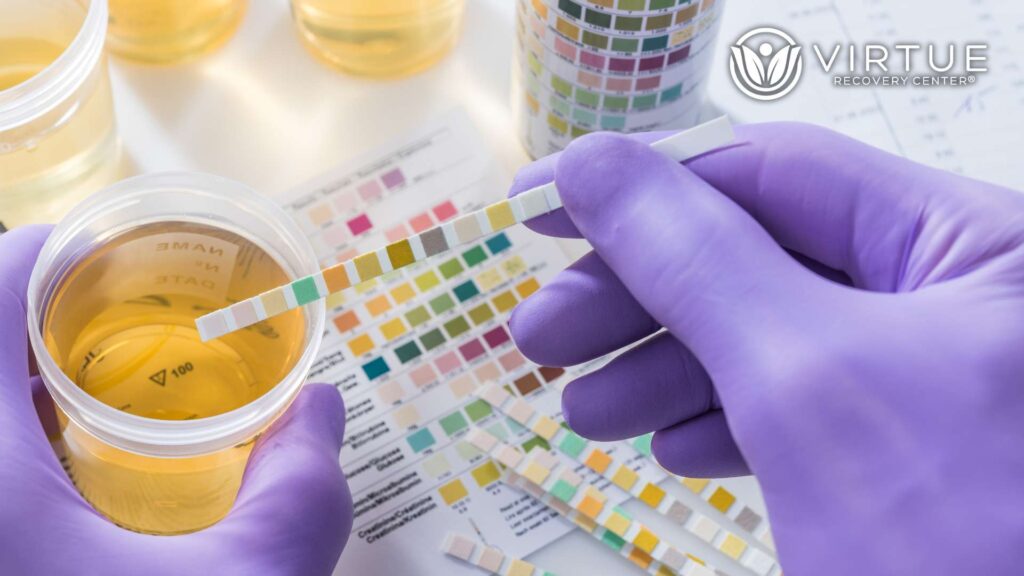Suboxone Duration: What You Need to Know
Suboxone, a prescription medication used in addiction treatment, is known for helping individuals recover from opioid dependency. Understanding how long Suboxone remains in the system can help individuals navigate recovery and drug testing with confidence.
This article explains how Suboxone works, the factors influencing its duration in the body, and how treatment options can support individuals on their journey to recovery.
Key Takeaways
- Suboxone stays in the system for days, influenced by metabolism, dosage, and frequency of use.
- Different tests detect Suboxone for varying durations. Urine tests are the most common.
- Effective addiction treatment includes detox programs and therapy for lasting recovery.
Introduction
Recovery from opioid addiction often involves medications like Suboxone, which reduces withdrawal symptoms and cravings. Suboxone’s unique combination of buprenorphine and naloxone helps individuals regain control over their lives.
But how long does Suboxone stay in your system? This is a common question, especially for those preparing for drug tests or transitioning through recovery. In this guide, we will break down the factors influencing Suboxone’s presence in the body and discuss effective treatment options.
How Does Suboxone Work?
Suboxone combines two key components: buprenorphine and naloxone. Buprenorphine, a partial opioid agonist, eases cravings and withdrawal symptoms, helping individuals regain stability. Naloxone, an opioid antagonist, prevents misuse by blocking the euphoric effects of opioids if taken improperly.
This combination makes Suboxone a safe, effective tool for opioid addiction recovery when used as prescribed.
How Long Does Suboxone Stay in the System?
Suboxone’s duration in the body depends largely on its active components:
- Buprenorphine: It has a long half-life of 24–42 hours, meaning it takes this time for the concentration to reduce by half.
- Naloxone: It breaks down much faster, with a half-life of about 2–12 hours.
Suboxone can remain detectable in the system for several days after the last dose.
Detection Times by Test Type
- Urine Tests: Typically detect Suboxone for up to 7 days.
- Blood Tests: Detectable for 2 days on average.
- Hair Follicle Tests: Traces can linger for up to 90 days, depending on usage patterns.
Each method varies, but urine testing is the most commonly used in treatment and workplace settings.
Factors That Influence Suboxone’s Duration in the Body
The time Suboxone remains in the system varies significantly from person to person. Key influencing factors include:
- Metabolism: Individuals with a faster metabolic rate process and eliminate Suboxone more quickly. Those with slower metabolism, often influenced by age or health conditions, may retain it longer.
- Dosage and Frequency: Taking higher doses or using Suboxone over a prolonged period can extend its presence in the body.
- Body Composition: Factors like weight and body fat percentage can influence how Suboxone is stored and metabolized.
- Liver Function: The liver plays a crucial role in metabolizing Suboxone. Impaired liver function can slow the process.
Understanding these factors helps individuals better navigate treatment and testing requirements.
Challenges with Suboxone Withdrawal
Discontinuing Suboxone after prolonged use can lead to withdrawal symptoms, including anxiety, insomnia, muscle aches, and sweating. While these symptoms are typically less severe than opioid withdrawal, they can still be challenging to manage without medical support.
Managing Withdrawal
Medical detoxification is often recommended to ensure safety and comfort during withdrawal. In a supervised setting, healthcare professionals can gradually taper doses to minimize discomfort, offering medications and therapies as needed.
Addiction Treatment for Suboxone in Your System
Overcoming addiction is a multifaceted journey, and treatment options vary based on individual needs.
- Medical Detoxification
This is the first step for those dependent on Suboxone or other substances. Medical detox focuses on safely managing withdrawal symptoms while preparing for further treatment.
- Residential Treatment Programs
Comprehensive care in a residential setting provides 24/7 support, combining medical and psychological interventions to address addiction holistically.
- Therapy and Counseling
Therapies like cognitive-behavioral therapy (CBT) and group counseling help individuals uncover the root causes of their addiction while developing healthy coping strategies.
- Aftercare and Support Groups
Continued support after initial treatment is crucial for maintaining sobriety. Programs like 12-step groups, individual counseling, and community support ensure lasting recovery.
Conclusion to How Long Suboxone Lasts in The Body
Suboxone is a vital tool for individuals recovering from opioid addiction, but understanding its presence in the body is key to managing recovery effectively. Factors such as dosage, metabolism, and the type of drug test used influence how long Suboxone stays in your system.
If you or someone you know is struggling with Suboxone dependency or opioid addiction, help is available. Virtue Recovery Center offers compassionate, evidence-based care tailored to your needs. Call 866-461-3339 today to take the first step toward recovery.
FAQs About Suboxone & How Long It Stays in Your System
How long does Suboxone stay in your system?
Depending on individual factors, suboxone can remain detectable for 3–7 days in urine and up to 90 days in hair follicle tests.
What affects how long Suboxone stays in the body?
Metabolism, dosage, frequency of use, and liver function are significant factors.
What are common withdrawal symptoms from Suboxone?
Symptoms include sweating, muscle aches, anxiety, and insomnia.
How is Suboxone addiction treated?
Treatment includes medical detox, residential programs, therapy, and ongoing support groups.
Is Suboxone safe for long-term use?
Suboxone is safe when prescribed, but a healthcare provider should monitor long-term use to prevent dependency.
Does naltrexone show up on a urine drug screen?
Naltrexone is not typically detected in standard urine drug screens as it is not a controlled substance or commonly abused drug. However, specialized tests can identify its presence if specifically requested.
How far back does a lab urine test go?
The detection window for substances in a lab urine test depends on the drug and frequency of use, but most substances can be detected for 1-4 days. Chronic or heavy use may extend this detection window for some drugs.
What is the 3-day rule for Suboxone?
The 3-day rule allows doctors to administer Suboxone (buprenorphine) to treat opioid withdrawal symptoms for up to three days without obtaining a special DEA waiver. It is intended as an emergency measure to bridge care until formal treatment can begin.
Can an employer not hire you if you are prescribed Suboxone?
Under the Americans with Disabilities Act (ADA), employers cannot discriminate against you for taking prescribed Suboxone as part of a legitimate medical treatment. However, some job roles with safety requirements may have exemptions depending on federal or state laws.
How long does buprenorphine stay in your system?
Buprenorphine can remain detectable in urine for up to 7-10 days after the last dose, depending on factors like dosage, metabolism, and frequency of use. It has a long half-life, contributing to its extended detection time.
How long does methadone stay in your system for urine?
Methadone is detectable in urine for up to 8-12 days after the last use for regular users. For occasional users, the detection window may be shorter, typically around 3-5 days.
How long does it take for Suboxone to kick in?
Suboxone typically begins to take effect within 30-60 minutes after being dissolved under the tongue. Full relief from withdrawal symptoms is usually felt within 1-2 hours.
Is buprenorphine the same as Suboxone?
Suboxone contains buprenorphine as its primary active ingredient but also includes naloxone to deter misuse. Buprenorphine alone is available under different brand names and is sometimes used without naloxone for certain treatment plans.
Resources
https://www.drugs.com/medical-answers/long-suboxone-stay-system-3535350/



























